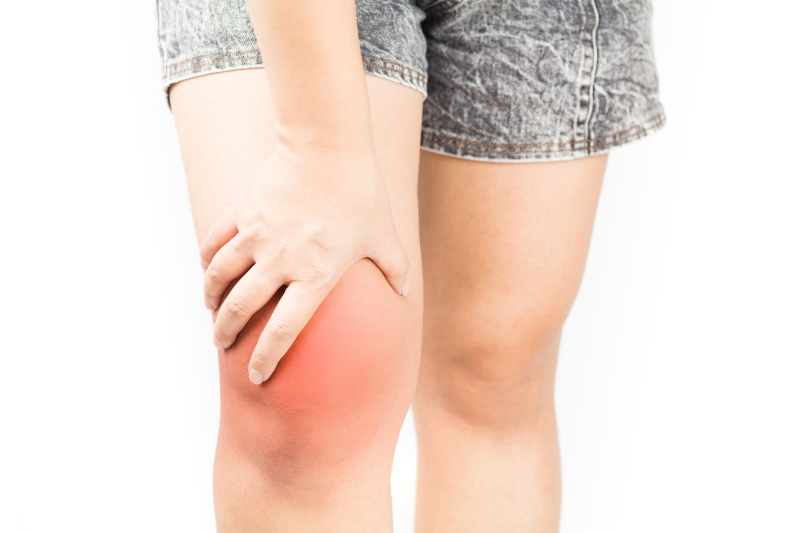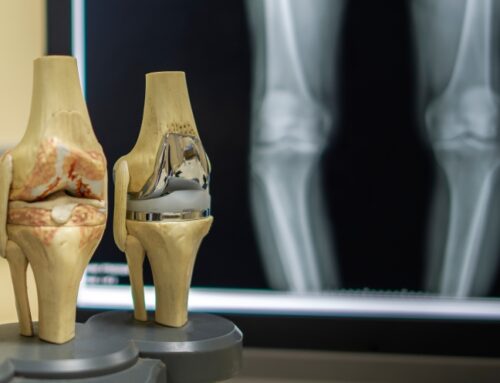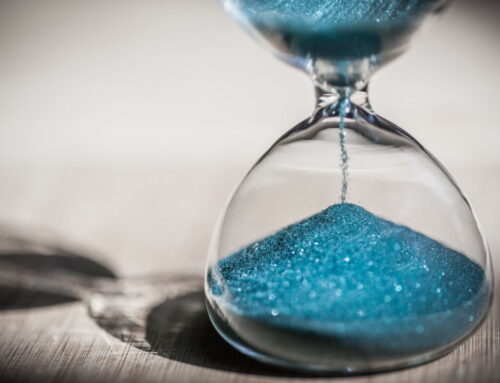Fluid on the knee, also called a knee effusion or water on the knee, can be a painful condition with fluid build up in and around the knee joint. Generally, we treat fluid on the knee with simple strategies such as ice, medication, and a compression wrap. However, sometimes we must drain fluid from the knee, also called a knee aspiration. So, how do you perform knee drainage, and when should you do it?
Causes of fluid on the knee

The knee joint is a synovial joint lined by synovium, producing fluid. This fluid protects the cartilage lining the joint surface and reduces friction with joint movement. However, when the joint becomes diseased, it has excess synovial fluid. Common causes of excess knee fluid include osteoarthritis, inflammatory arthritis, infection, or traumatic injuries such as meniscal or cruciate ligament tears.
Why do we drain fluid from knee?
We drain fluid from the knee for two reasons:
- You want to find out the cause of water on the knee, i.e., for diagnostic purposes.
- You want to help reduce the swelling, especially when simple measures such as ice and ibuprofen fail. The build-up of knee fluid greater than 50mls often causes pain and restricts mobility. Draining the knee can ease the symptoms.
Can you diagnose knee diseases from draining fluid?
Yes. Knee effusions are not all the same. For example, fluid in the knee due to trauma, such as a meniscal tear, differs from fluid from inflammatory arthritis, such as gout.
When we drain the knee, we send it to a laboratory to analyze the types of cells in the fluid. Also, microbiologists look for bacteria or crystals in the fluid, which can point to the cause. We use this information with X-rays, MRI, and blood tests to confirm the cause.
How to get fluid out of knee?

Ususally, we perform a knee aspiration in a clean clinic room. Generally, we target the top part of the knee joint just above the patella.
First, we clean the area with antiseptic. Second, we use a needle to puncture the skin to get to the knee joint. Using ultrasound to direct the needle into the joint is better to improve accuracy. Also, ultrasound allows us to empty the knee of fluid. Finally, we place a bandage on the puncture site to prevent bleeding from the skin. The entire process can take a few minutes.
Sometimes, when fluid on the knee is due to inflammation or an injury, we inject cortisone or other injectables such as hyaluronic acid or platelet-rich plasma. In addition, we recommend regular ice and a compression bandage to prevent the knee effusion from returning.
Risks of knee aspiration
Generally, the procedure is low risk, mainly if done in a clean room and with ultrasound guidance. However, there is a small risk of the knee joint returning or introducing infection. In addition, superficial swelling and skin bruising can occur at the entry site.
Does draining fluid from the knee hurt?
Generally no. You may feel slight pain or discomfort as the needle enters the joint. However, taking the fluid out of the knee should not be painful. In addition, using ultrasound improves the accuracy of needle placement and reduces procedure discomfort.
If we analyze the fluid on the knee, we’ll need to speak to you after a few days.
What to do after a knee aspiration?
The steps after a knee aspiration are essential. First, leave the bandage on until your doctor tells you to remove it. You should keep the entry site clean. Second, you can return to normal activities after the procedure, but you should avoid jumping back into sports or walking longer until you’re told to do so. Finally, if the knee is sore, you should ice every and take ibuprofen or NSAIDs every 4-6 hours until the pain disappears.
Other frequently asked questions about knee drainage:
What are the different ways to reduce fluid in the knee?
Simple measures to control water on the knee include the following:
- Regular ice packs for 10 minutes every 4-6 hours
- Using a compression bandage to apply pressure to the joint
- NSAIDs such as ibuprofen or diclofenac
- Wearing a knee brace for walking or sports
Can a knee effusion return?
Yes. Fluid on the knee can return after days or weeks. The key is to find the cause so the treatment can be more effective and stop it from returning.
A final word from Sportdoctorlondon about knee aspiration
Knee drainage is an excellent technique to help with diagnosis and reduce symptoms from knee fluid build-up. You should see an experienced doctor who can perform this skill efficiently, preferably with the help of ultrasound to improve the effect.








Leave A Comment